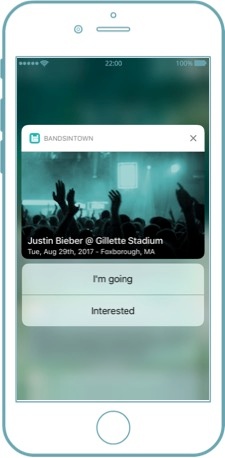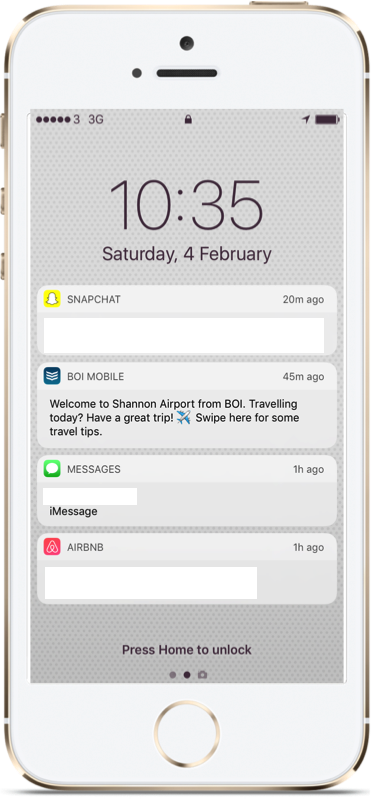Have you ever considered geo-push for your mobile marketing strategy and thought “I’m not sure that will work for my industry/app”?

We’re here to say that location-based push notifications are definitely a smart choice for your app! We are in a new age of mobile marketing. Our audiences want highly targeted marketing. The old method of sending push notifications to everyone just doesn’t work anymore. Using location is a more effective way to send mobile messages that boost engagement: it considers where your user is, allowing you to craft a message with a call to action that encourages users to respond. And the results are worth it: location-based push notifications have an average click-through rate of 40%!
Here’s how brands you’ve definitely heard of are making it work for them.
1. TRAVEL | TripAdvisor
TripAdvisor’s embraced geo-push, creating geofences for a variety of popular destinations from airports to restaurants. Messages are focused on offering value to user, and reinforce a pattern of engaging with the TripAdvisor community for input on travel or dining decisions.
2. MEDIA/ENTERTAINMENT | BandsInTown
Events are inherently a local draw, so for apps like event discovery app Bandsintown, tracking by location is a must. The app scans your music streaming to suggest events, and lets you set and share alerts for artists you’re interested in. Extra points for using a rich push notification, which is more likely to draw the user’s eye, increasing conversion.
3. RETAIL | Sephora
Don’t be fooled by the simplicity of this push notification. It’s a targeted, geo-driven delight of a mobile message. With the user’s own account data (in this case, an e-gift card), Sephora uses location to offer their users a pre-emptive solution (“oh right, I do have that gift card to use”) and entice them to stop in and buy in that very location.
4. RESTAURANTS | Starbucks
At this point, you could kind of describe Starbucks as a mobile marketing legend. They embraced location services and geo-push early on, using it to alert users of special offers and facilitating their very popular order-ahead service. Here, the Starbucks Steaming Kettle location uses it to let a user know that delicious coffee is only an easy mobile order away.
Let’s Dance by Bowie is highly recommended during the work week.
5. NAVIGATION/RESTAURANTS | Waze Dunkin’ Donuts
Take benefits a partnership between two powerful brands can create, add in geo-driven push notifications, and you have an incredibly targeted, compelling experience. Waze, a popular interactive navigation app, partnered with Dunkin’ Donuts and uses location to find nearby Dunkins, and allow users to order their coffee and treats ahead. Another geo-push alerts them when they’re close to the Dunks with their order.
6. REVIEW | Yelp
I’m all about hot new restaurants, but Yelp’s right; I care the most about them when they’re already in my neighborhood–and that means I’m more likely to swipe my way into the Yelp app. Yelp’s use of an emoji helps out too: research shows users are 85% more likely to swipe when a push notification includes one.
7. SPORTS | San Francisco 49ers
The San Francisco 49ers is one of the most unique uses of geo-push we’ve seen so far. The team partners with Amazon Prime, allowing users to receive deliveries to their parking lot tailgate in an hour or under. It’s a way to use location services to offer a one-of-a-kind solution to a common problem 49ers users have, and gives them another reason to return to the app.
8. BANKING | Bank of Ireland
This is a great example, because it’s different from the kinds of geo-driven push notifications you’d expect to see from a bank. Location services tells the Bank of Ireland app that this user was in an airport, so chances were good they’re taking a trip, right? So BOI send a push linking to some helpful content around using their BOI accounts while traveling. Super relevant–I don’t know if you’ve dealt with bank issues on a trip, but it’s definitely not fun.
The point of all this is to say geo-push notifications work for any industry because personalization and hyper-targeted messaging is what makes CTAs compelling for every app user. It’s not limited to industries with storefronts; it’s about adding value to your user’s lives, and reinforcing that your app is essential to making their day to day better.









